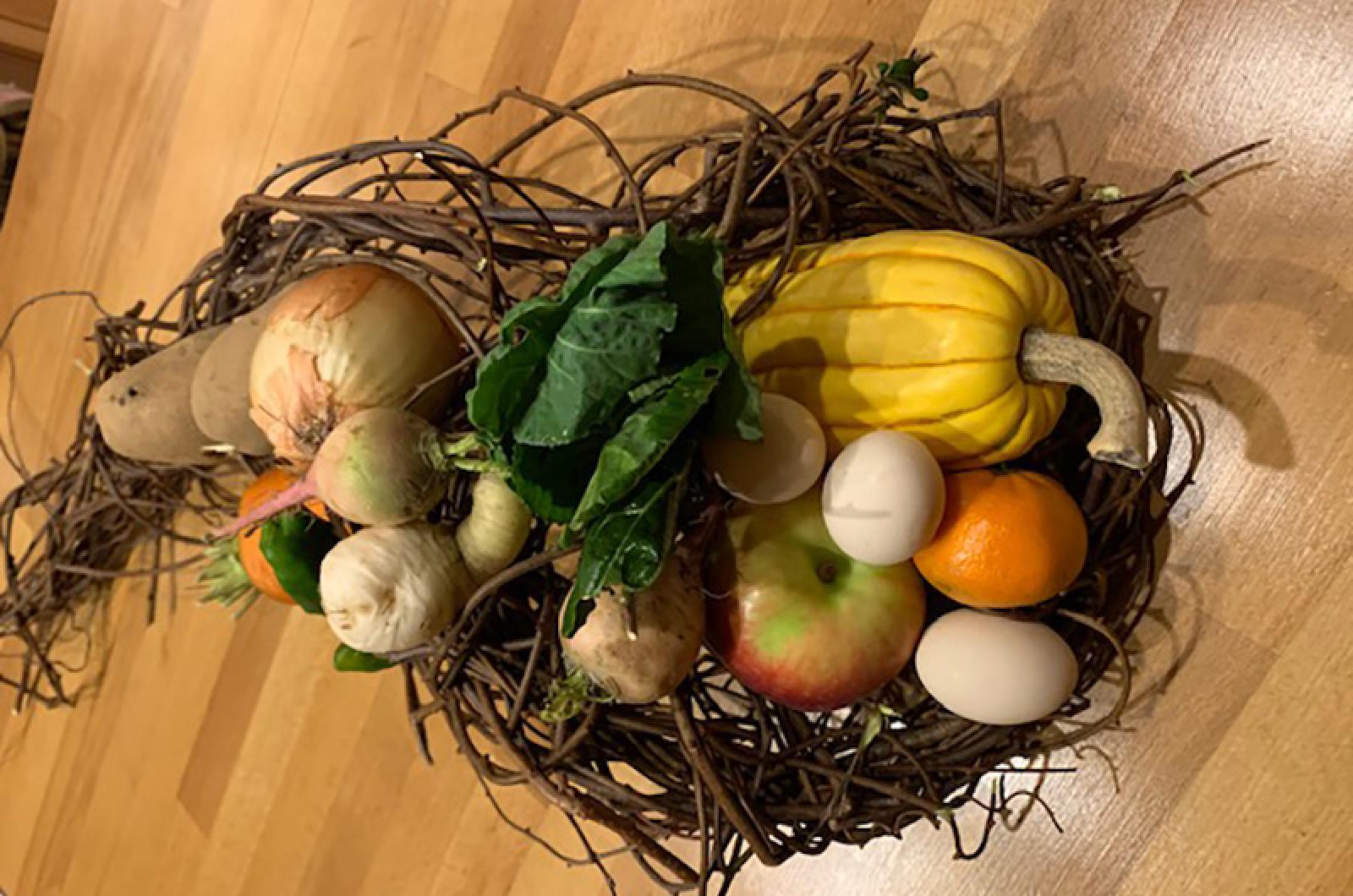Ancient Greek playwright Sophocles wrote mostly tragedies. However, he had occasional upbeat moments. Of the Greek god, he enthused, “The dice of Zeus always fall luckily.”
Zeus was not always the almighty deity for which he is now known, but he was definitely fortunate. At one time, Zeus was a helpless and hunted infant. Born to Rhea and Cronus, he was whisked away to prevent his father from eating him as he did his other children (Cronus swallowed a swaddled rock, thinking it Zeus) and hidden in a cave in Greece.
In his hideaway, Zeus was cared for and nurtured by Amalthea, a goat goddess who fostered and nursed Zeus, keeping him safe from Cronus. During a playful moment, Zeus, who was stronger and more powerful than he realized, broke one of Amalthea’s horns. To honor her loss, Zeus used his power to make that horn forever giving and always full of food and nourishment, thus making the first cornucopia.
An alternate tale from Ovid’s Metamorphosis credits Hercules as the cornucopia’s creator. He wrestled with the river god Achelous and tore off one if his horns. To the Naiads, he presented this prize, and these nymphs turned the horn into the endless provider of food and goodness for which it became known.
Two competing stories birthed the cornucopia or horn of plenty, that fall symbol of harvest and abundance. From pagan origins, the horn has endured and is still a seasonal emblem that is both functional and ornamental. Early on made of grasses, twigs and vines, it had a strap and was used as a hands-free basket to forage and collect the harvest. Brought home, it was also a vessel to store items in, and to serve family and friends from, filled to the brim with grains, nuts, fruits, flowers and vegetables. Now, almost everything and anything can be held in its hollow.
And, no longer is it just made from wood. Cornucopias can be crafted from a variety of materials including stone, ceramic, and even a few other oddities. In the 1904 World Fair in St. Louis, the first edible waffle cone was offered, and due to its shape was called the World Fair Cornucopia. Following much later on the edible inspiration was Paul Hollywood’s Danish Cornucopia featured on The Great British Bake Off. This confectionery concoction was made of almonds, eggs, and sugar and held together by caramel.
As a symbol, cornucopias have been featured throughout history as symbols of gods and goddesses, and representations of promise, good fortune, hope, abundance, charity and as a tribute or to pay homage. The popularity of these horns of plenty continue today as they are incorporated into flags, coats of arms, currencies, and seals of states (Wisconsin and Idaho) and countries such as Peru, Columbia, Panama, Venezuela, and Victoria, Australia.
Though this Thanksgiving may be very different than years past, the cornucopia reminds us of what we have and what we can be thankful for. No matter where you are or with whom you are able to celebrate the season, I hope that, like Zeus, you are able to make abundance out of scarcity and creativity out of calamity.
Suzan Bellincampi is director of the Felix Neck Wildlife Sanctuary in Edgartown, and author of Martha’s Vineyard: A Field Guide to Island Nature and The Nature of Martha’s Vineyard.







Comments
Comment policy »